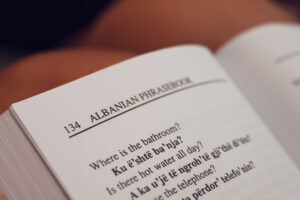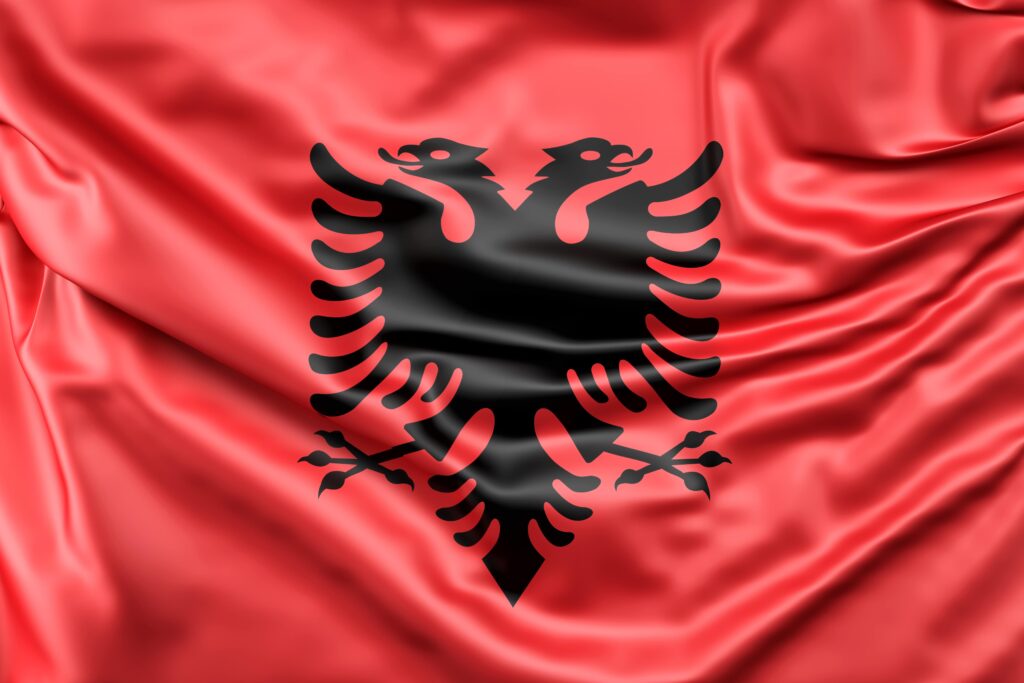Albanian Explained: A Beginner’s Guide to the Albanian Language
Albanian is a beautiful language that developed in Southern Europe. It has an official character in Albania and Kosovo, as well as being a lesser-used language in the Balkans. However, chances are you’ve only heard it once in Liam Neeson’s Taken (In case you don’t remember, Neeson’s daughter was kidnapped by a group of Albanians!).
Here are the eight most interesting facts about this fascinating language!
Table of Contents
- Albanian Across the World: How Many People Speak Albanian?
- Is There an Albanian Alphabet?
- Is Albanian a Hard Language?
- Expressing Admiration is Essential
- The Albanian Language Family: What Language Is Albanian Similar to?
- Albanian: The Oldest Language in the World?
- Albanian Dialects: How Many Languages Are Spoken in Albania?
Explore our Albanian courses with qualified native teachers in your city or online!
1. Albanian Across the World: How Many People Speak Albanian?
Albanian has around 10 million speakers. The interesting thing is that only a third of them actually live in Albania. Around 7 million Albanian speakers are spread across the globe, while the population of Albania doesn’t reach 3 million people.
2. Is There an Albanian Alphabet?
It’s often said that Modern Albanian has an alphabet of its own. However, in essence, it’s just a Latin-based alphabet with a few additions, ë and ç being the most important of them. Then, there are nine pairs of characters that form separate letters of the alphabet – dh, gj, ll, nj, rr, sh, th, xh, zh.
The modern Albanian alphabet is an extender version of the Latin alphabet which consists of 36 characters (7 vowels and 29 consonants). Some of these letters have been adapted to represent Albanian sounds. Before Latin was adopted, Albanian was written either in Greek, in the Cyrillic alphabet, or in the Turkish variation of the Arabic alphabet.
3. Is Albanian a Hard Language?
Yes. Albanian is considered to be one of the hardest languages to learn. This is especially true for native speakers of English.
There are five grammatical cases in Albanian – nominative, dative, genitive, accusative and ablative. English, in opposition, has only three: subjective (he), objective (him) and possessive (his).
On top of this, Albanian (like Spanish or French) has gendered nouns, not only masculine or feminine but neutral nouns as well. Add a verb system that has three persons, ten time tenses and six moods, and it becomes clear that studying Albanian grammar is no picnic.
With the exception of a few English borrowings, the Albanian language sounds completely unfamiliar to English speakers. In fact, the Albanian language sounds nothing like any of the Germanic or Romance languages.
4. Expressing Admiration is Essential
In linguistics, a grammatical mood is a set of verbs used for signalling modality. In other words, it refers to the way speakers use verbal inflexions to express their attitude toward the person they’re addressing or the meaning that they’re expressing.
An interesting fact about the Albanian language is that one of its six moods is solely reserved for admiration, which means that there is a verb form used exclusively to express surprise. The way Albanian speakers use these inflexions is similar to how English speakers use the word “apparently” at the end of sentences, but this mood can also be used to express irony.
For example, Ti flet shqip simply affirms “You speak Albanian”, while Ti fliske shqip! implies that the speaker is surprised by the fact that someone speaks Albanian.
Because Albanian is not a very well-known language, there are many misconceptions about it that we need to clarify.
Below, we will answer some of your most burning questions and doubts about the Albanian language.
5. The Albanian Language Family: What Language Is Albanian Similar to?
Albanian forms a separate branch within Indo-European. As a result, it can't conclusively be related to any other Indo-European language.
Based on geographical proximity, linguists claim that Albanian is connected to ancient languages of the Balkans such as Illyrian and Thracian. However, there is no solid linguistic ground to support such claims.
6. Albanian: The Oldest Language in the World?

Photo via Flickr
Nobody really knows when the Albanian language originated. However, the earliest records of written Albanian date from the 15th century. These are mostly religious fragments, such as a short Catholic baptismal formula from 1462, and a few verses from the New Testament from around the same period.
Although the first dictionary Latin-Albanian dictionary came out in 1635, the Albanian language only adopted the Latin alphabet as its definite writing system in 1908. Before that, it could be written in 4 different alphabets: Latin, Greek, Cyrillic and Turkish Arabic.
7. Albanian Dialects: How Many Languages Are Spoken in Albania?
Albanian is the country's official language, spoken by over 97% of the population of Albania. There are also two spoken Albanian dialects, Tosk and Gheg, which are mutually intelligible. The Shkumbin river acts as a rough dividing line, with Tosk being spoken south of the Shkumbin and Gheg north of it.
Do you want to delve deeper into the Albanian language?
On our website, you will find both group and individual Albanian courses for every level. The best thing about our courses is that they are taught by fully qualified Albanian native-speaker teachers. Send us a message now and we’ll give you more information about our tailor-made lesson plans and flexible schedules!
Explore our Albanian courses with qualified native teachers in your city or online!



